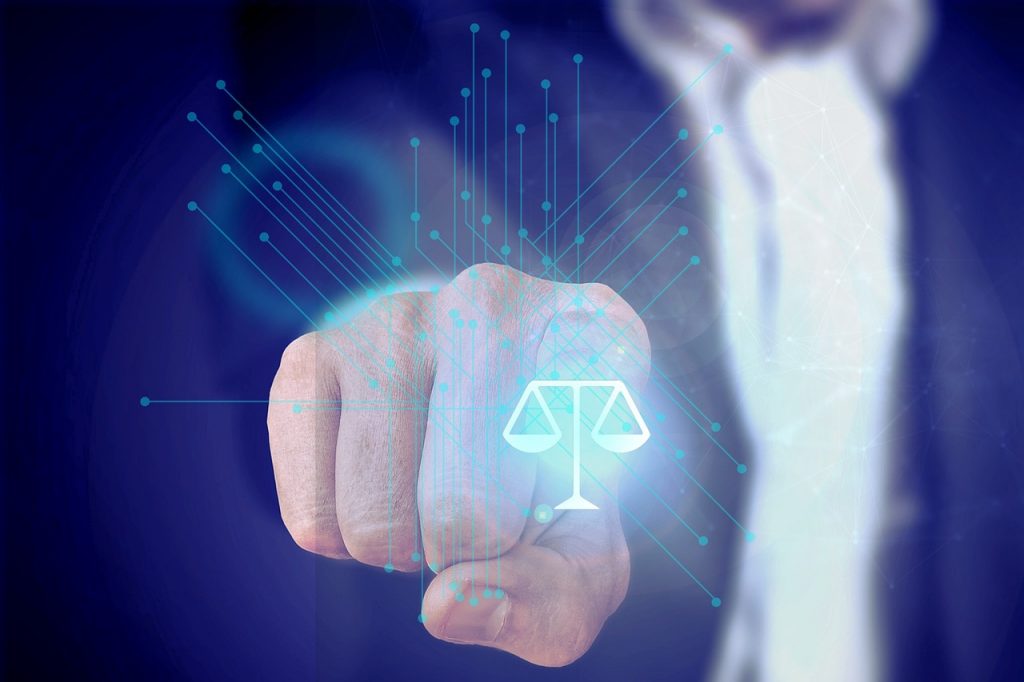‘Intellectual Property Right Laws’ ensure protection for creations, innovations, including patents, trademarks, copyrights, and trade secrets. These laws prevent unauthorized use and secure ownership rights. Patents safeguard inventions; copyrights protect artistic works; trademarks and trade secrets maintain brand identity and business confidentiality. As technological landscapes and global dynamics shift, adapting these laws becomes crucial, especially to address challenges posed by AI and digital proliferation. Understanding these protections deeply enhances comprehension of their impact.
Understanding Intellectual Property Rights
Intellectual property rights are crucial legal protections for inventors and creators, enhancing innovation and economic development. Legal loopholes may allow unauthorized exploitation of these creations, potentially harming innovation by depriving creators of deserved revenue. Conversely, fair use exceptions are vital for balancing protection with societal benefits, permitting limited use of copyrighted materials for specific purposes like education and critique. However, misuse of these exceptions can infringe on intellectual property rights, impacting creators negatively.
Types of Intellectual Property Laws
Intellectual property laws encompass four main types: patents, copyrights, trademarks, and trade secrets, each serving distinct protection purposes.
Patents secure inventors’ rights to novel inventions or processes for a specific duration, incentivizing innovation and profit from unique contributions.
Trademarks safeguard identifiers like brands and logos, ensuring product or service distinction and supporting fair competition.
Trade secrets protect confidential business information—such as manufacturing methods or marketing strategies—that offer competitive advantages, prohibiting unauthorized use or disclosure.
Copyrights defend creators’ rights over artistic works, including literature, music, and art, maintaining work integrity and originality.
Industrial Design Laws, under patent laws, protect the aesthetic aspects of non-utilitarian objects, preventing exploitation of their visual design investments.
These laws collectively promote creativity, ensure fair business practices, and support economic stability.
The Role of Copyrights
Copyright laws are crucial for protecting original creators’ rights, covering creation, implementation, and enforcement. This analysis first examines these laws’ structure and application, then delineates the scope and limits of copyright protection, identifying protected and non-protected works.
Understanding Copyright Laws
Intellectual property rights, particularly copyright laws, safeguard original authorship, crucial for promoting creativity and innovation. These laws grant creators rights to their works, deterring unauthorized copies and use, vital in the digital era for combating digital piracy. Digital piracy involves illegal copying and distributing copyrighted content, harming creators’ financial incentives and potentially reducing creative outputs. Copyright laws thus ensure creators are appropriately rewarded and dissuade illegal content sharing.
The Fair Use Doctrine, a key component of copyright law, permits limited use of copyrighted material without owner consent for purposes like criticism, teaching, and research, balancing copyright holder interests with public access to creative works. Understanding these aspects of copyright law is vital for creators and consumers in the digital age, ensuring both protection and access to creative content.
Copyrights Protection Scope
Copyright laws protect original works and derivatives, including adaptations and translations, while limiting digital piracy. Fair use provisions permit limited use without consent, balancing creators’ rights and public interest, promoting cultural and intellectual development. Infringement penalties, ranging from fines to imprisonment, enforce these laws, deterring unauthorized use and emphasizing the importance of respecting intellectual property rights. Strengthening enforcement and enhancing public awareness are crucial for effective copyright protection.

Importance of Trademarks
Trademarks are crucial in the global marketplace, enhancing brand recognition, fostering customer loyalty, and driving economic growth. They uniquely identify a company’s products or services, distinguishing them from competitors and protecting brand identity. In intellectual property law, trademarks are vital, defending against infringement where unauthorized use of a similar trademark could confuse consumers and dilute brand identity. Trademarks maintain market integrity by ensuring product authenticity and quality, promoting fair competition, and preventing unethical practices like counterfeiting and imitation.
Patents and Innovations
Patents are crucial in intellectual property rights, essential for protecting technological innovations. Understanding patent laws helps innovators shield inventions from unauthorized use and imitations. This analysis explores these laws, focusing on protecting technological advancements.
Understanding Patent Laws
Patent laws, integral to intellectual property rights, promote innovation and protect inventors by granting exclusive rights to their inventions. This exclusivity incentivizes investment in new products and processes. Patent litigation deters unauthorized use by enforcing rights in court, while patent licensing facilitates technology dissemination through controlled sharing, often for royalties. These mechanisms balance innovation encouragement with broad technological progress benefits, essential for inventors and companies to optimize potential advantages.
Protecting Technological Innovations
Patent protection, essential for technological progress, safeguards inventors’ creations, promotes economic growth, and supports competitive markets. Innovation Licensing, involving the patent holder’s permission for others to use, produce, or sell an innovation, ensures inventors’ rights and aids technology commercialization. Technology Transfer, the movement of technology from labs to markets, relies on strong patent laws to prevent unauthorized use and maintain market equilibrium. Thus, patents are pivotal in protecting innovations, facilitating Innovation Licensing and Technology Transfer, and enhancing the tech sector’s competitiveness.
Trade Secrets Protection
Trade secrets, integral to intellectual property rights, demand stringent protection for business sustainability and competitive edge. Key to safeguarding these is preventing Trade Secret Misappropriation, characterized by unauthorized use of confidential business information, breaching trust or confidentiality agreements.
Confidentiality Agreements, or NDAs, are crucial, legally binding parties with access to secrets, mandating non-disclosure and non-misuse, with legal repercussions for violations. Yet, NDAs alone are insufficient. Companies must enforce strong internal controls, security protocols, and conduct regular audits to minimize unauthorized access, theft, or leaks.
In today’s digital landscape, cybersecurity threats are prominent. Implementing advanced cybersecurity measures such as encryption, intrusion detection, and secure backups is vital for comprehensive trade secret protection. These efforts are essential for maintaining business longevity and competitiveness in a digital world.
Enforcement of Intellectual Property Rights
Enforcing intellectual property rights effectively demands a blend of legal, technological, and administrative actions to protect creative assets and prevent violations. This enforcement, primarily local, is shifting towards a global focus due to increasing international rights abuses.
Global enforcement hinges on international cooperation and legal standardization. Nations must synchronize their strategies via treaties, bilateral agreements, and involvement with entities like the World Intellectual Property Organization (WIPO) and the World Trade Organization (WTO).
Challenges in global IP rights enforcement include diverse legal systems and varying enforcement methods, complicating the creation of a unified global strategy. Additionally, advancements in technology complicate the detection and prosecution of infringements, especially with the expansion of digital platforms. Despite these challenges, enforcing intellectual property rights is crucial for the global economy.
Future Trends in Intellectual Property Laws
In the 21st century, intellectual property laws must evolve due to technological advances and global changes. Digital Piracy intensifies with wider internet access, necessitating laws that balance creator rights and public information access. AI-generated content, increasingly resembling human work, poses ownership challenges. Future laws may recognize AI as a ‘creative entity’, addressing rights between AI developers and public domain considerations. This evolution is crucial for businesses, creators, and consumers to protect intellectual property in a dynamic digital age.
Frequently Asked Questions
What Are the Penalties for Violating Intellectual Property Laws?
Violating intellectual property laws incurs severe penalties, including financial damages and imprisonment. Consequences vary by violation nature and extent, emphasizing the importance of legal compliance.
How Can I Register My Idea or Invention for a Patent Internationally?
To secure an international patent for your invention, manage high costs related to legal and translation fees by employing effective invention marketing strategies.
Can I Protect My Intellectual Property Rights Even if I Only Have a Small Business?
Size does not restrict intellectual property protection; small businesses can secure trademarks effectively. All businesses benefit from local IP laws, ensuring valuable ideas and inventions are legally protected.
Whats the Process to Dispute a Copyright Infringement Claim?
To dispute a copyright infringement claim, utilize the Fair Use Defense or submit a DMCA counter-notice. Consult legal experts for guidance through this complex process.
Does the Use of Intellectual Property Rights Vary Depending on the Industry?
Yes, the use of intellectual property rights varies by industry. Technology, pharmaceuticals, and entertainment sectors adopt distinct IP strategies tailored to their specific needs.





